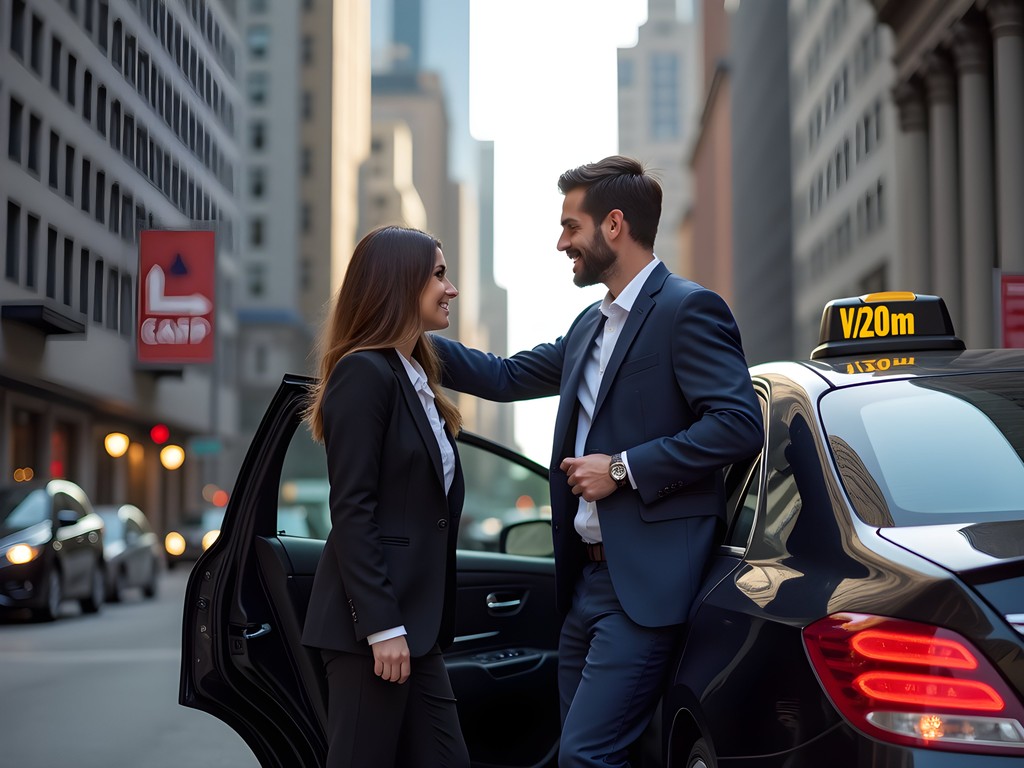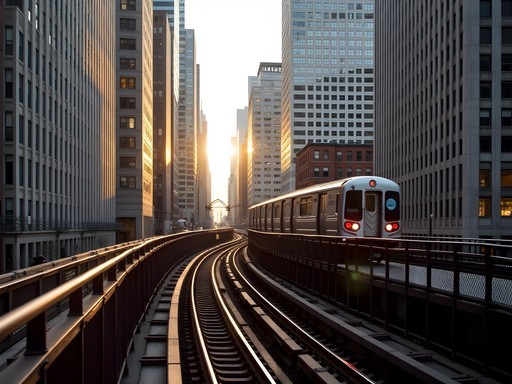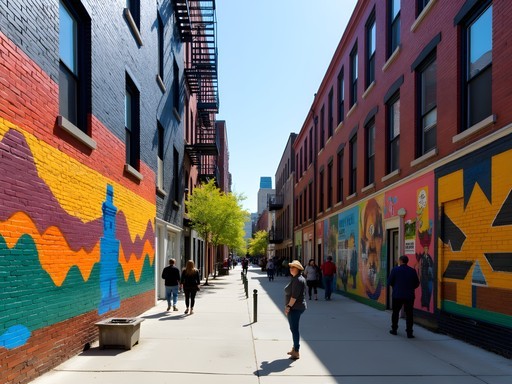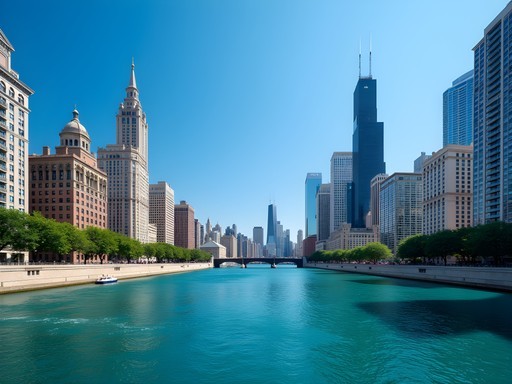Disclosure: This article contains affiliate links. We may earn a commission from purchases at no extra cost to you, which helps our travel content.
Chicago's transportation system initially reminded me of Frankfurt's efficiency but with its own distinctly American character. Meine Güte! The first time I stepped off the Blue Line from O'Hare, I was struck by how the city's transit network seamlessly connects its diverse neighborhoods while offering stunning views of that magnificent skyline. As someone who's inspected safety protocols for transportation systems across three continents, I've developed a keen eye for what makes urban mobility work—and Chicago gets so much right. Whether you're rushing between business meetings, exploring architectural wonders, or catching a race at Arlington International (a personal favorite of mine), understanding Chicago's transportation options will save you time, money, and unnecessary stress. In this guide, I'll share my professional insights and personal experiences navigating the Windy City like a local, with budget-conscious recommendations that never compromise on safety or efficiency.
Mastering the 'L': Chicago's Elevated Train System
The Chicago 'L' (short for elevated) train system forms the backbone of the city's public transportation network with its eight color-coded lines connecting 145 stations across the city and some suburbs. As a safety inspector who's evaluated transit systems worldwide, I'm genuinely impressed by its reliability and coverage.
My first Chicago business trip taught me that the Blue Line is your direct connection from O'Hare International Airport to downtown (about 45 minutes), while the Orange Line serves Midway Airport. For business travelers, this means significant savings over taxis while avoiding unpredictable traffic—I've saved nearly $40 each way compared to rideshares during rush hour.
The Red and Brown Lines became my go-to routes for accessing most business districts and hotels. The Red Line runs 24/7 north-south through the heart of downtown, while the Brown Line loops through the financial district (The Loop) before heading north through several business-friendly neighborhoods.
One particularly memorable morning, I needed to reach an early meeting in the Loop from my Wicker Park accommodation. Despite light rainfall, the Blue Line delivered me downtown in just 15 minutes, with the elevated sections offering a spectacular sunrise view of the city awakening—a moment that perfectly captures why I prefer public transit over being stuck in a car.
For tracking train arrivals, I rely on my transit app which provides real-time updates and has saved me countless times when schedules changed unexpectedly. The app works offline too, which is particularly useful when you're underground with spotty reception.

💡 Pro Tips
- Purchase a reloadable Ventra Card immediately upon arrival for seamless transfers between trains and buses
- Consider the 1-day, 3-day, or 7-day unlimited passes for maximum value if making more than 4 trips per day
- Trains run more frequently during rush hours (typically every 3-8 minutes) but less often late nights and weekends
Bus Network: Reaching Where Trains Don't Go
Chicago's extensive bus network fills the gaps between train lines with over 100 routes covering virtually every corner of the city. During my safety consulting work in Chicago, I discovered that buses offer access to many business parks and corporate campuses that aren't within walking distance of 'L' stations.
The J14 Jeffery Jump and the 146 Inner Drive/Michigan Express became my secret weapons for efficiently traversing the city. These express routes make limited stops and utilize dedicated bus lanes during peak hours—a system reminiscent of Frankfurt's efficient design but adapted to Chicago's grid layout.
On a particularly tight schedule last spring, I needed to attend three meetings in different parts of the city. Using the CTA Bus Tracker website, I planned a route combining the Red Line and the 151 bus that saved me nearly an hour compared to taking rideshares through congested streets.
Bus etiquette in Chicago follows what my German upbringing would consider proper: orderly queuing, entering at the front, and exiting through rear doors. Coming from the sometimes chaotic bus systems I've experienced in other American cities, Chicago's predictability was refreshing.
For business travelers with accessibility needs, I've been impressed by Chicago's commitment to a 100% accessible bus fleet. Each vehicle features low floors, ramps, and priority seating—something I particularly noted during my professional assessment of their safety protocols.
During inclement weather (which Chicago has plenty of), buses can be more reliable than waiting on exposed train platforms. I always keep a compact umbrella in my work bag for unexpected downpours when walking between transit stops.

💡 Pro Tips
- Use Google Maps or the official Ventra app to track real-time bus arrivals
- Board with your Ventra card ready to tap or have exact change ($2.25 for regular routes, $2.50 for express)
- Request your stop by pulling the cord or pressing the strip along the windows about a block before your destination
Divvy Bikes: The Business Traveler's Secret Weapon
Chicago's Divvy bike-sharing program has transformed how I navigate the city during business trips. With over 600 stations and 6,000 bikes (including e-bikes), this system provides unmatched flexibility for short trips between meetings.
As someone who regularly inspects safety protocols for adventure activities like river rafting, I was pleased to find Chicago's bike infrastructure surprisingly well-developed. Protected bike lanes on major thoroughfares like Milwaukee Avenue and Dearborn Street create relatively safe corridors through the busiest parts of the city.
Last summer, I had a meeting reschedule that left me with a two-hour gap downtown. Rather than sitting in a café, I grabbed a Divvy bike and explored the magnificent Lakefront Trail—18 miles of dedicated path along Lake Michigan. This impromptu ride gave me fresh perspectives on the city and cleared my mind before my afternoon negotiations.
For business travelers, Divvy offers several advantages over other transportation methods:
- Predictable travel times: No waiting for trains or sitting in traffic
- Exercise opportunity: Counteract long meetings and restaurant meals
- Cost-effective: Day passes are just $15 for unlimited 3-hour rides
- Flexibility: Hundreds of docking stations mean you're never far from a bike or drop-off point
I highly recommend downloading the Divvy mobile app before your trip. It shows real-time bike and dock availability and lets you purchase passes directly from your phone. For business travelers staying more than a few days, consider the $15/month membership which includes unlimited 45-minute rides.
My professional safety advice: always wear a helmet (I pack my own foldable helmet which takes minimal space in my luggage) and use front and rear lights when riding at night. Chicago drivers are generally courteous to cyclists, but maintaining visibility is essential—especially during those early winter evenings when darkness falls before the workday ends.

💡 Pro Tips
- Electric-assist Divvy bikes (black with blue accents) cost slightly more but make Chicago's occasional hills and wind much more manageable
- Use the Lakefront Trail to avoid street traffic entirely when traveling north-south along the eastern edge of the city
- Always check both the bike availability at your starting point AND dock availability at your destination to avoid frustration
Navigating the River: Water Taxis and Architecture Tours
One of Chicago's most underutilized transportation options—and one that resonates with my professional background in rafting safety—is the Chicago Water Taxi. These yellow vessels offer a unique way to travel between key business districts while providing spectacular architectural views along the Chicago River.
During summer months, water taxis operate between Michigan Avenue, Chicago Riverwalk, Chinatown, and other strategic locations. For business travelers staying near these stops, water taxis can be both practical transportation and an impromptu sightseeing opportunity between meetings.
On my last visit, I had meetings at opposite ends of the Loop. Rather than walking 25 minutes in formal business attire during July heat, I took a refreshing 10-minute water taxi ride that offered stunning perspectives of the city's architectural marvels. The fare ($6 one-way or $10 all-day) was well worth the time saved and the mental break it provided.
For those with flexible schedules, I highly recommend upgrading from a simple water taxi to an architecture river cruise. These 75-90 minute guided tours offer fascinating insights into Chicago's architectural history while providing a unique vantage point of the city's most famous buildings. I've found these tours perfect for unwinding after intense business days or entertaining clients with something more memorable than another restaurant meal.
From my safety inspector's perspective, Chicago's water transportation options maintain excellent safety records, with well-trained staff and properly maintained vessels. Life jackets are readily available, and the boarding/deboarding procedures are orderly and secure.
My river journeys in Chicago remind me of exploring Frankfurt's Main River and the canals of my mother's ancestral Mexico—there's something universally revealing about seeing a city from its waterways. Water provides the original transportation corridors that shaped urban development, offering insights into a city's history that roads simply cannot.

💡 Pro Tips
- Water taxis run seasonally (typically April-October) with reduced schedules during non-peak months
- Purchase tickets online or use the Ventra app to avoid lines at busy stops
- The Riverwalk route between Michigan Avenue and Chinatown offers particularly spectacular views of the city's architecture
Rideshares and Taxis: When to Splurge
While I'm a strong advocate for public transportation, there are times when rideshares or taxis make practical sense for business travelers in Chicago. Understanding when to use these services can optimize both your budget and time management.
As someone who regularly balances efficiency with cost-effectiveness in my safety consulting work, I've identified specific scenarios where rideshares prove their worth in Chicago:
- Airport arrivals with substantial luggage: While the Blue Line from O'Hare is cost-effective, managing multiple suitcases on trains can be challenging
- Late night travel: Though some train lines run 24/7, service is reduced and waiting times increase substantially after midnight
- Inclement weather: Chicago's notorious winter conditions sometimes justify the extra expense to avoid exposure
- Multi-stop itineraries: When visiting several clients in different neighborhoods with tight scheduling
For rideshare services, I've found Lyft tends to have slightly better availability in Chicago's business districts during peak hours, though prices between major services are comparable. The Uber app still offers the advantage of upfront pricing and the ability to schedule rides in advance—a feature I rely on for early morning airport departures.
Chicago's traditional taxis remain a viable option, particularly when hailing directly from hotel taxi stands or popular business districts. During surge pricing periods for rideshare services, traditional taxis often become the more economical choice.
One money-saving strategy I've employed is using rideshares strategically for the "last mile" problem. For example, taking the Blue Line from O'Hare to the closest station to your hotel, then using a short rideshare for the final leg with luggage. This hybrid approach has saved me up to 70% compared to direct airport rideshares.
From a safety perspective—always my professional priority—I appreciate Chicago's regulated taxi industry and the accountability measures in rideshare apps. When using either service, I maintain the same vigilance I recommend in my safety consultations: verifying vehicle details before entering, sharing trip details with colleagues when traveling alone, and always wearing seatbelts (a habit from both my German upbringing and professional background).

💡 Pro Tips
- Download both major rideshare apps before your trip as availability can vary by neighborhood and time of day
- For predictable morning meetings or airport departures, schedule rideshares the night before
- Traditional taxis can be hailed on major streets or at designated taxi stands and accept credit cards by law
Final Thoughts
Chicago's multi-layered transportation system offers business travelers remarkable flexibility when navigating this dynamic city. By strategically combining the 'L' trains, buses, Divvy bikes, water taxis, and occasional rideshares, you can optimize both your time and budget while experiencing the city from different perspectives. During my safety consulting work across three continents, I've rarely encountered an American city with such comprehensive transit options. The system's efficiency reminds me of European networks while maintaining its distinctly Chicago character. Alles in Ordnung—everything in order—as we'd say in Frankfurt. Whether you're rushing between meetings in the Loop, exploring potential business locations in emerging neighborhoods, or simply making the most of your downtime, Chicago's transportation network will serve you well. Remember that each mode offers its own advantages: trains for speed, buses for coverage, bikes for flexibility, water taxis for unique perspectives, and rideshares for those situations demanding door-to-door service. Safe travels and efficient journeys in the Windy City!
✨ Key Takeaways
- Purchase a Ventra Card immediately upon arrival for seamless access to trains and buses
- Consider Divvy bikes for short trips between business meetings in the downtown area
- Water taxis offer both practical transportation and architectural views during warmer months
- Strategically combine transportation modes based on weather, luggage, time constraints, and budget
📋 Practical Information
Best Time to Visit
year-round (each season offers different transportation advantages)
Budget Estimate
$30-50 daily for transportation (using primarily public transit)
Recommended Duration
1 week to fully experience various transportation options
Difficulty Level
Beginner (System Is Well-Marked And User-Friendly)
















Comments
WindyCityFan
Love that shot of the L train turning the corner in the Loop! Such an iconic Chicago image.
BusinessTraveler55
Pro tip for anyone staying downtown: the #J14 Jeffrey Jump bus is amazing for getting to the Museum Campus quickly. Saved me tons of time compared to the Red Line + walking.
journeypro
Thanks for this tip! I'll have a free afternoon and was planning to visit the Field Museum. Will definitely use this bus route!
TravelWithKids2020
We did the public transportation with our kids (8 and 10) and they loved the L trains! Felt like a theme park ride to them lol
Jean Wells
Jennifer, your comparison to Frankfurt's transit system resonated with me! I spent three weeks in Chicago last autumn conducting research for my own blog, and I was thoroughly impressed with the transportation infrastructure. The Divvy bikes were indeed a revelation - perfect for those beautiful days along the lakefront. I particularly appreciated your section on the water taxis; many visitors miss this delightful option. The architecture tour you mentioned was a highlight of my trip - seeing the city from the river provides such a unique perspective. One addition I might suggest: the Metra commuter rail is excellent for day trips to suburbs like Evanston or Oak Park for those wanting to explore beyond the city center. I carried my pocket guide which has excellent transit maps that complement the Ventra app nicely.
ChiTownLocal
Jean - totally agree about the water taxis! Such an underrated way to get around. And they're way cheaper than the architecture tours if you're just looking for transportation.
Jean Wells
Absolutely! The water taxi from Michigan Avenue to Chinatown was both practical and scenic. Great tip for budget travelers.
journeypro
First time going to Chicago next month for business! How safe is the L train at night? I'll be staying near the Loop but have meetings in River North and was debating between transit vs rideshares.
Jean Wells
I found the L very safe in the Loop and River North areas, even later in the evening. The trains run frequently and those stations are well-lit and busy. Just maintain normal city awareness. For those short distances, the L is much faster than dealing with downtown traffic in a rideshare!
journeypro
Thanks Jean! That's really helpful. I was worried about navigating the system but Jennifer's guide makes it seem doable. Did you use the Ventra card or the app?
Jean Wells
I used the Ventra app on my phone - very convenient! Just tap and go. I recommend downloading it before your trip and setting it up with your payment method. Saves time and you don't need to worry about carrying another card.
skyguy
If you're staying in the Loop, the free trolley to Navy Pier runs all summer! Saved us a bunch on transportation and the kids loved it.
Frank Carter
Great guide, Jennifer! I'd add that for business travelers who need to stay connected while navigating Chicago, the cellular service on the 'L' can be spotty underground. I learned this the hard way during a video call that dropped as we went into a tunnel! Now I always carry my pocket wifi when I'm there. Also, pro tip for anyone visiting: the architecture boat tour doubles as both transportation and the best intro to the city. Start your trip with it if you can - it helped me get oriented to Chicago's layout better than any map could.
smartperson
How safe is the Blue Line from O'Hare late at night? My flight lands at 11pm.
skyguy
I've taken it at midnight before. It's generally fine, just stay aware like in any big city. If you're nervous, maybe consider a rideshare that late.
winterfan
Going to Chicago next month - is the Ventra card worth getting for just a 4-day trip? Or should I just pay as I go?
Frank Carter
Definitely get the Ventra card! You can load a 3-day pass on it which will save you money if you're taking 2+ rides daily. Plus you can use it for both trains and buses.
winterfan
Thanks Frank! Will grab one at the airport then.
Fatima Sims
Jennifer, your comparison to Frankfurt's transit system is spot on! I was in Chicago last fall for a conference and found the color-coded 'L' lines so intuitive. My secret hack was taking the water taxi from my hotel near Michigan Ave to the conference center - gorgeous views of the skyline, no traffic, and it felt like a mini architecture tour each morning. Also appreciated your Divvy bike tips - the app made it super easy to find docking stations. The three-day pass was perfect for my stay!
Venture X
Premium card with 2X miles, $300 travel credit, Priority Pass